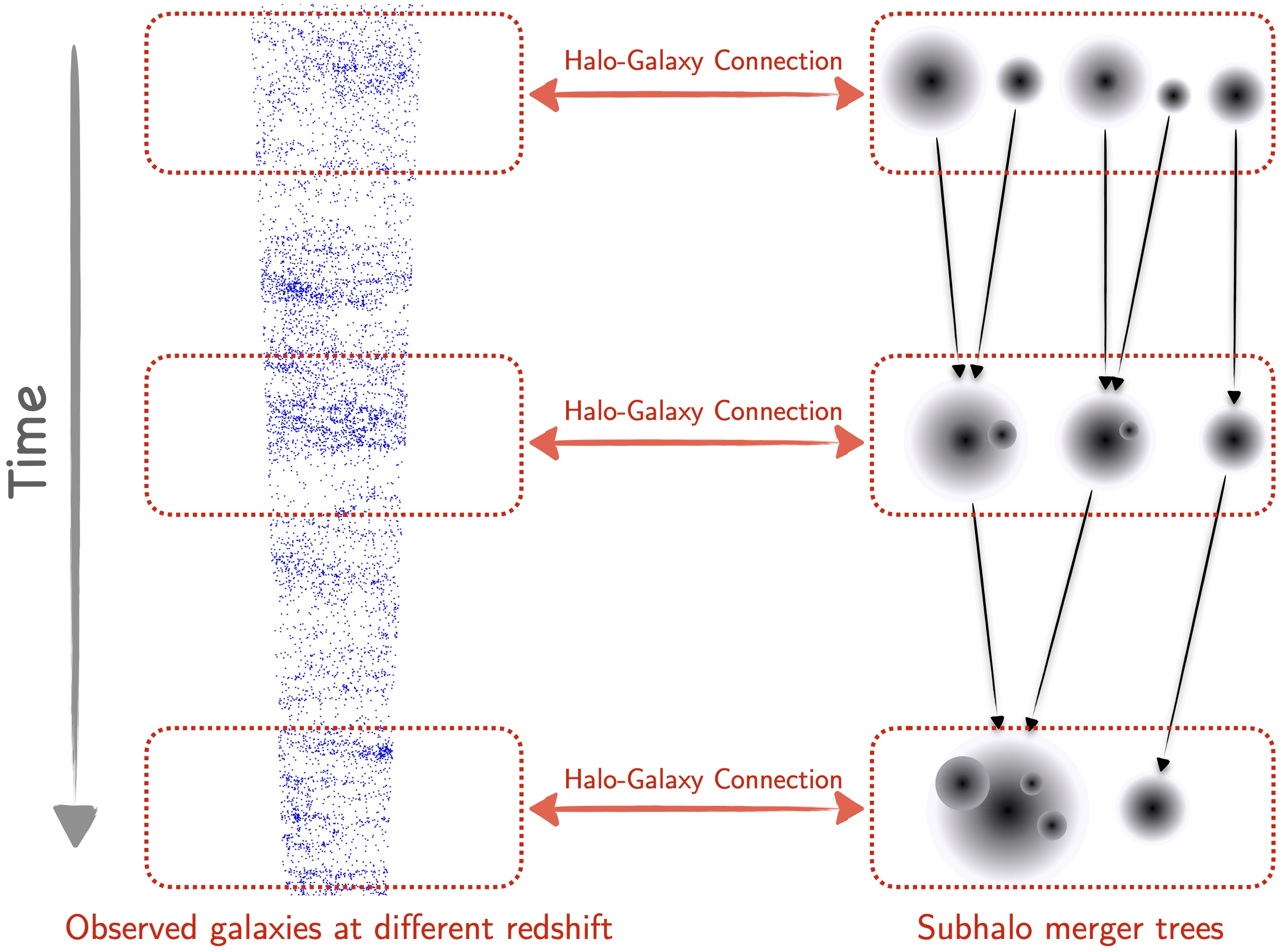Connect galaxies across cosmic time
May. 30, 2023
Galaxies observed at different redshifts are causally irrelevant but statistically related. By connecting galaxies across cosmic time in a model-dependent way, one can directly infer the evolution of galaxy properties.
This blog is based on arXiv:2211.00485.
Redshift evolution and causality
Light speed is finite, so it takes finite time before we can see distant objects. For example, it takes about eight minutes for the photon to travel from the Sun to the Earth, so the Sun perceived by us is actually what it is like eight minutes ago. This effect becomes more non-negligible in astronomy because all objects that we are interested in are so distant that it may take millions to trillions of years before we can receive the light these distant galaxies emit.
This effect also allows us to study the evolution of our Universe and the galaxies in it. For example, galaxies observed at $z\sim 1$ are when the Universe is only 6 Gyr old, while the current age for our Universe is about 13.7 Gyr. Similarly, $z\sim 2$ galaxies are at the time when the Universe was 3.4 Gyr old. Hence, by observing galaxies at different redshifts, we can get the statistical evolution of galaxies as a function of cosmic time.
However, one must be aware that we can only get the statistical evolution instead of the causal evolution, because we are actually observing different patches of our Universe at different cosmic time.
Galaxy-halo connection
Our method of connecting galaxies across cosmic time relies on the tight correlation between galaxies and their dark matter halos, which is called the galaxy-halo connection in literature (See this blog for a physical picture).
Dark matter halos and their assembly histories, i.e. their progenitors, can be generated from pure dark matter numerical simulations and semi-analytical methods.
The connection between dark matter halos and galaxies is built upon several methods. The first category contains methods based on heuristic assumptions. For example, the subhalo abundance matching (SHAM) method assumes that more massive galaxies tend to live in more massive halos. The age distribution matching method assumes that, at a given stellar mass, early-formed dark matter subhalos prefer to host quiescent galaxies, which can help us to assign colors or the star formation rates to subhalos. The second category involves a parametric model to populate galaxies into dark matter halos (not subhalos) and, then, constrain these parameters using summary statistics, like the stellar mass function and the two-point correlation function. The third category is to model the formation and evolution of galaxies in dark matter halos, like the hydrodynamical simulations, semi-analytical models, and empirical models of galaxy formation and evolution (these models will be introduced in a separate blog). Finally, there have be many attempts to directly probe the dark matter distribution around observed galaxies through gravitational lensing, satellite galaxy kinematics, and the kinematics of gas and stars.
Connect galaxies across cosmic time
To connect galaxies across cosmic time, we can first populate observed galaxies into subhalos at different redshifts leveraging the established galaxy-halo connection. Then, we can use the causal link provided by the subhalo merger trees to connect these populated galaxies across cosmic time. This is the gist of this method.
Summary in one figure
